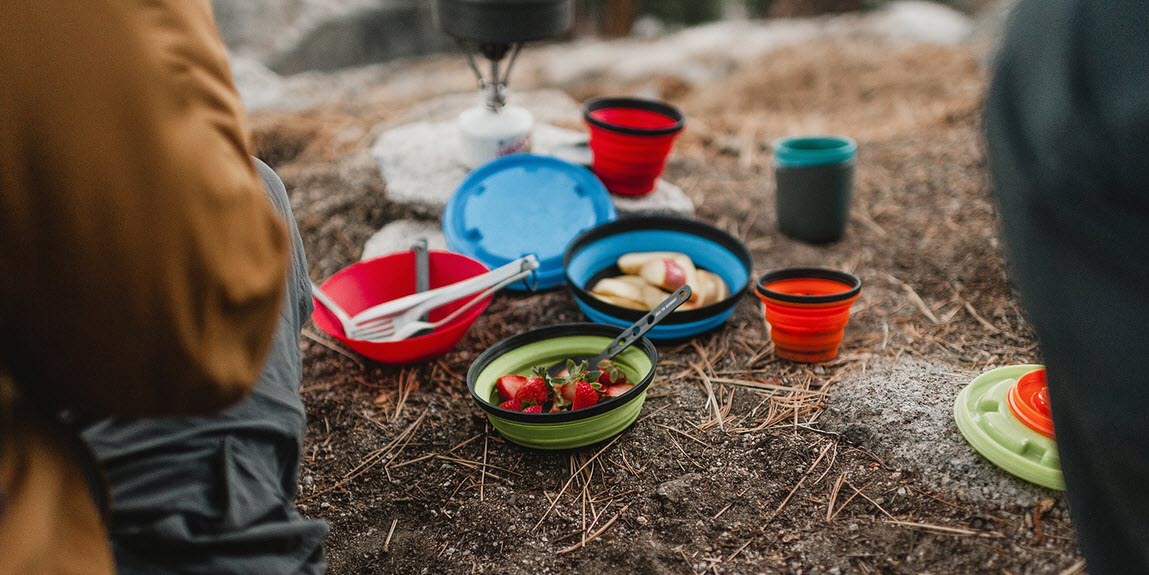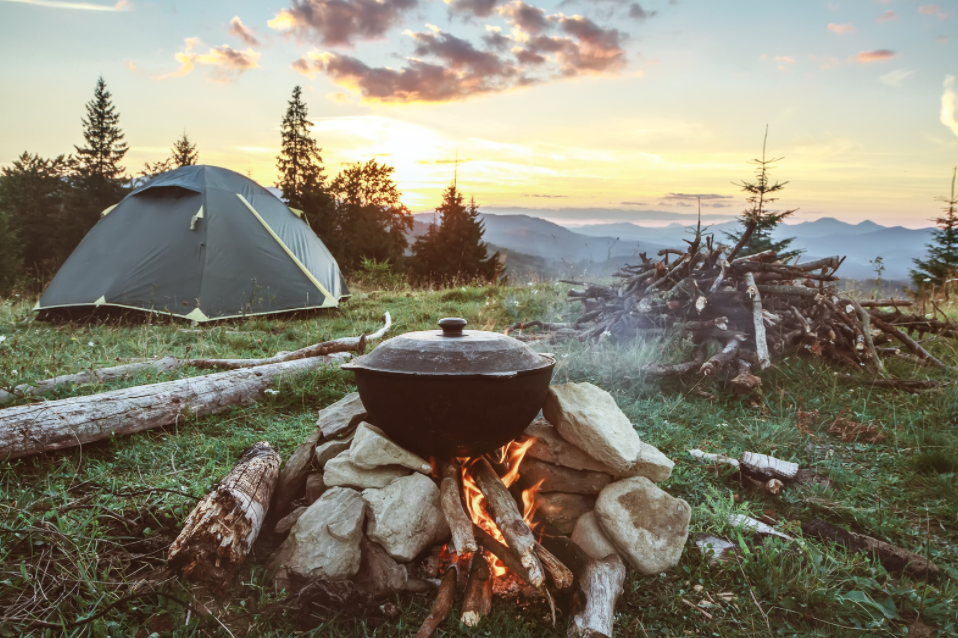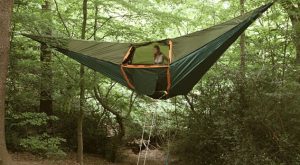
Hammock camping is one of the exciting, easy and advantageous ways of camping. Ease of use, lightweight, health benefits and safety made this form more popular with passing time. To have ultimate fun and enjoyment, one needs to have proper knowledge about hammock camping as beginners often get into confusion and anxiety about weather, bugs or health issues. In this Hammock Camping Basics guide, we will show you how to tackle weather challenge and horrible insects and enjoy the most out of it.
How to start Hammock Camping:
To enjoy a hammock camping to the fullest, you must know how to start it correctly. If you can set your hammock properly, keep bugs away and have enough arrangements to cope with any adverse weather, then you will love it the most.
Why Go Hammock Camping:
If you never went on a hammock camping, you might not be able to feel the urge. But, once you try it in a proper way, you will definitely become a fan of it. Here are some exciting benefits that might inspire you to go for hammock camping.
- The hammock is getting popular among campers as it is lighter than a tent and easily transportable. Who wants to carry a heavier backpack while there is a solution.
- In recent hammock is getting on the rise as new technology ensures comfort and safety at the same time. You can easily spend the whole night in your hammock without worrying about tipping over.
- Unlike a tent, it’s quick and easy to set up. Moreover, you can easily find camping spot as a rock, the uneven or watery ground won’t be an issue with hammock.
- The hammock is much economical than the tent.
- In hammock camping, you are allowed to enjoy nature more closely. Twinkling stars will soothe you in a way you can’t just can’t replicate.
Find the right location:
Placing your hammock in a perfect location is one of the tricky parts. To ensure the highest safety, you should take this decision after deliberate consideration. Go through your hammock’s manual for more accuracy. Select sturdy trees that 12 -16 feet at a distance and the height should be less than 20” from the ground. 4 feet is the recommended height according to the manufacturers. Additionally, your hammock spot should be in such a place where you will get enough shade and a cooling breeze. Check the article on how much space do I need to hang my hammock.
Get a good Hammock:
A comfortable sleep is of crucial importance to enjoy your vacation. That’s why the first thing you will need for a perfect hammock camping is a safe and comfortable hammock.
All hammocks are not of same features and benefits. A camping hammock is different from the ones we see on the beach. Normal hammocks are made from simple rope and these are not suitable for camping. Camping hammocks should be of durable materials like woven nylon, polyfilament webbing straps or aluminum carabiners. These materials make the hammock more durable and lightweight. Moreover, camping hammocks are specially designed for a refreshing night’s sleep.
Cons of hammock camping:
Along with numerous advantages, hammock camping also has some disadvantages. Like,
- Unlike a tent, placing hammock in a right way takes time and repeated practice. This is very important for safety.
- To be optimally set up, enough support is needed. That’s why, where there is lacking of a strong tree, like in a desert, you can’t use a hammock.
- You can’t get a good night’s sleep without under quilt as air can’t pass away and the body remains hot.
Hammocks VS Tents:
If you want to know all the advantages and disadvantages of both hammock and tent to decide, you should always remember that each one comes with some uniqueness.
Tents don’t require extra support, easier to change clothes and the pads are cheaper than a quilt whereas, for a hammock, you won’t have to worry about ground condition, lightweight and easy to set up.
So, it would be wiser if you consider the nature of your camping and then decide which option would be apt for you.
Wilderness ethics:
Whenever you go for camping, try to lower your impact on nature. For this purpose you should remember:
- Always use stripes that don’t damage trees.
- Try to set your hammock up in established campsites.
- Always choose sturdy trees to set your hammock up because if the tree is not strong, it may result in decaying the tree and may prove dangerous for you.
To enjoy a great holiday, hammock camping is undoubtedly a great option. The freedom and openness of a hammock offers is something makes it more popular.
Page Contents
How should you choose your camping hammock?
Since the market gives you many models to choose from, you should consider some aspects before buying. Details come next.

Size and specs
Here are some elements to think about when selecting your hammock.
Do you want a single or a double hammock?
Single hammock
Most single hammocks are 4 to 5 ft wide. If you buy a single-wide hammock, you cut down the weight of your load, assuming you go backpacking. However, the tradeoff is that you will have less space when sleeping or lounging. The weight limit for single hammocks ranges from 300 to 400 pounds, whereas ultralight models go for about 250 pounds.
Double hammock
Most models have a 5 to 6-ft range. They offer more generous space for sleeping or lounging than single hammocks do. Additionally, two people can comfortably share the hammock. Most double hammocks range from 400 to 500 pounds, whereas ultralight models get around 350 pounds.
Length
Hammock lengths don’t vary much, so unless you’re taller than ordinary people, you shouldn’t worry about the length. Keep in mind to buy a hammock at least 2 ft longer than your height for best comfort at night.
Fabric
Not all models will have the fabric listed; if so, look for “denier.” Unlike ultralight fabrics, heavy-duty materials present a high denier number. Some hammocks are made with 70D fabrics, whereas the lightweight counterparts are made with 30D fabrics. The tradeoff for low weight is that these fabrics wear out faster than high-denier fabrics.
Hammock Tents and Sleep Systems
If you spend the night in the wild and have enough trees, the hammock becomes an excellent option for sleeping arrangements. Personal preference is the main factor when choosing a hammock over a tent for camping. The hammock will offer a unique sleeping experience—some like it, some never try it. We recommend you borrow a hammock from a hiker friend before buying one for your next camping trip.
Here are the benefits of using a hammock tent/system:
- It has less impact on ground vegetation than a tent
- You don’t need a level ground for the setup
- You can use it as a camp chair
- In the summer, it will keep you cooler than a tent
- The ultralight models are lighter and more compact than most tents
We want you to make an informed decision, so here are the downsides of using the hammock for sleeping:
- You need sturdy trees to camp above the treeline
- It isn’t easy to sleep with someone else
- It doesn’t provide much storage space
- It’s less protective in the rain
If you decide to use a hammock sleep system, you can buy the components a la carte or buy a package that consists of:
- Hammock
- Rain tarp
- Insulating under-quilt
- Suspension system
- Bug netting
Some hammock tents come with lightweight poles to obtain a tent-like structure. Hammock tents have to be made of flame-retardant materials.
Hammock tent for backpacking
Such models are snug to cut down the weight and list the maximum height for the sleeper. You want a hammock that is longer than your height.
Hammock tent for car camping
Choose the hammock according to the weather and decide which accessories to use. You will be able to select a big and more spacious hammock than you’d want in a backpack. Check out the high-end systems that include several hammocks under a single rain tarp.
What accessories should you buy for your hammock?
Luckily for outdoor enthusiasts, most accessories are compatible with any hammock brand. However, you should always check out before buying. Here are the most common accessories to add to your hammock to improve your comfort:

Suspension system
Most hammocks come with carabiners with enough strength rating. However, a pair of tree straps (the suspension system) will improve the functionality. Seek that the straps you buy are at least 0.75 wide because thin straps will dig into the bark and damage the trees.
Rain tarp
You hang the rain tarp above the hammock and obtain a taut pitch with guylines. It goes without saying that a bigger model will ensure better protection than a smaller model. If the wind blows sideways, rain can still sneak underneath.
Underquilt
When you’re sleeping at night, the cool air will wrap around the bottom side and make you feel cold because you don’t have insulation underneath. You can add a sleeping pad into the hammock or buy an under-quilt. The latter will keep you warm because it hangs outside so that you won’t compress the insulation between your body and the hammock.
Bug net
We recommend buying a bug net with 360-degree protection because it will also hang underneath and protect your back. Look for a bug net with “no-see-um” netting so that all tiny pests are kept outside your hammock. Some bug nets come with a shock cord and a lock for effortless attachment to the hammock.
Sock
You can find hammock socks for both summer and wintertime. Summer socks are easy to use with a ridgeline and you can buy 10 or 11 ft length. You can rotate the socks and adjust the amount of heat retention and ventilation. They also include DWR for better protection of the quilt. On the other hand, winter socks have a panel for complete adjustment.
Ridgeline
You should use ridgelines to hold the tarps or attach top covers and bug nets. You can buy adjustable and fixed ridgelines and they work for various things. Fixed ridgelines are shorter than hammocks, whereas adjustable ridgelines come as Whoopie slings/universal constrictors. You can find titanium ridgelines that ensure effortless disconnection.
Double-ended stuff sack
The double-ended stuff sack is lightweight and waterproof. You can use it when hanging your hammock and packing it.
Hangle
The hangle is an essential device that helps you obtain a 30-degree angle when hanging the rope, web, or suspensions.
Do you know how to use your hammock?
Learn how to properly hang your hammock to feel comfortable and not damage the trees:
- Place the straps so that they don’t gouge or damage the bark of the trees
- The ropes should angle 30-degree and don’t go too tight
- Lie diagonally the hammock so that you sleep comfortably
- get used to the deep sag in the middle because it will actually help you sleep great
- Use an under-quilt when the temperatures go below 70F degrees.









